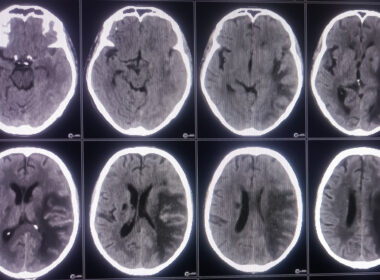Birth injuries are severe injuries to an infant during pregnancy and/or childbirth, often leaving the otherwise healthy child with a permanent disability. Birth injury cases differ from congenital disabilities in that congenital disabilities predispose an infant to have a disability but are not the result of malpractice.
Birth injury cases claim that the injury sustained by the infant was a direct result of the doctor’s negligent act or omission.
Common Types of Infant Injury
- Brachial Plexus Birth Palsy: Also known as Erb’s Palsy, this injury causes damage to the nerves when the infant’s shoulders or neck are stretched too far during the birth.
- Caput Succedaneum: Newborn scalp swelling, usually caused by a difficult head-first delivery or a procedure involving vacuum extraction.
- Birth Fractures: The most common types of birth fractures include collarbones and clavicles.
- Subconjunctival Hemorrhage: Caused by different pressures on the baby’s body during delivery, subconjunctival hemorrhage involves ruptured blood vessels in a baby’s eye.
Brain Damage In Birth Injury Malpractice
Most commonly, infant brain damage is either caused by trauma to the baby’s brain and skull and/or a lack of oxygen flow to the brain near the time of birth. A typical brain damage injury is Hypoxic-Ischemic Encephalopathy (HIE). HIE occurs when there is a lack of adequate oxygen flow to the baby’s brain.
The severity and length of oxygen deprivation affect whether hypoxic-ischemic encephalopathy occurs and how severe it is. Once HIE is suspected, imaging techniques like MRIs confirm a diagnosis.
Another common type of infant brain damage is cerebral palsy (CP), a group of four disorders that impact a child’s motion, balance, and posture. CP occurs when there is a severe injury to the infant’s brain.
Doctors often struggle to identify the specific injury, especially since children often don’t exhibit concrete symptoms until months or even years after they’re born. Most parents notice that their children have difficulty speaking, crawling, walking and developing other motor skills.
Consequences of Birth Injury Brain Damage
Sure signs may appear shortly after birth. Organ dysfunction, especially the heart, lungs, kidneys, liver, and blood, indicates possible HIE. Seizures in the first 24 hours of life can also indicate the possibility of hypoxic-ischemic encephalopathy.
Impairments caused by HIE can include epilepsy, developmental delay, motor impairment, neurodevelopmental delay, and cognitive impairment. Usually, the severity of impairment cannot be determined until a child is three to four years old.
The most common type of CP is spastic cerebral palsy, which affects the rigidity and stiffness of muscles and joints. Children with spastic CP struggle to control their movements, eat and speak.
Many of these children walk with an abnormal gait, such as walking on their toes instead of flat feet. Athetoid CP is less common but is known for causing movements out of the child’s control, such as slow writhing of the body and jerky movements of the arms, legs, hands, and feet.
Children with ataxic cerebral palsy tend to have tremors with voluntary movements. They’ll often walk with an unsteady gait, with their feet far apart from one another. This leads to difficulty performing tasks requiring precise motor control, such as buttoning their clothes and writing. The condition is not typically diagnosed until a child is about 18 months old; early diagnosis is more inaccurate.
Mixed cerebral palsy, the fourth type, presents itself as a combination of the other types. Children with mixed CP may have some hypertonic muscles, as people with spastic cerebral palsy do, and some hypotonic muscles, such as those with athetoid cerebral palsy.
What are the causes of birth-related injuries?
Surgery-related injuries
Cesarean Section Injury: Mothers and babies can sustain several kinds of injuries from C-sections, all of which fall under one of two categories: failure to perform a necessary cesarean section and failure to execute an essential cesarean section on time.
If unplanned, a C-section is necessary in cases where something goes wrong during active labor. This includes a stall in the progression of labor after several hours, a suspected uterine rupture, detachment of the placenta, signs of distress in the mother or baby, dangerous positioning of the umbilical cord, and other potential labor complications.
If the C-section was not performed when necessary, it could lead to many of the birth injuries mentioned above.
Medical negligence during pregnancy and birth
Certain factors occur during pregnancy or labor that should be addressed by a medical professional as soon as possible. If they are not addressed, they can lead to birth injuries. Some of these factors are:
- Infants that have grown too large for their due date. If a child has reached 8 lbs.13 oz., they are considered too large. The medical term for this is macrosomia.
- Prolonged labor
- The mother’s uterus cannot handle vaginal birth (e.g., it is too small or incorrectly shaped)
- Premature births (e.g., those that occur before week 37)
Birth injury statute of limitations
Statute of limitations is defined as a period in which you can legally file your birth injury claim.
With birth injury lawsuits, there may be specific statutes of limitation, or they may be general medical malpractice statutes of limitation, depending on the state.
In some instances, the consequences of birth injuries may only be visible several years or more after the injury occurred. This is usually taken into account by lawyers when determining when the statute of limitation runs.
It is essential to always speak with an attorney regarding statutes of limitation. A birth injury lawsuit in the state of South Carolina, for example, must be filed within three years from the time of the injury or within three years from the time the injury was reasonably discovered. For more information about statutes of limitations that may apply to your state or case, don’t hesitate to get in touch with an attorney here.
New York law has special rules known as “statutory tolls,” which extend the statute of limitations in cases where the plaintiff is an infant. Under the Civil Practice Law and Rules, infants are given an extension of the statute of limitations because they are unable to tend to their legal affairs in the eyes of the law.
In personal injury lawsuits, including concerning those brought against the government, statutes of limitations are “tolled” – a legal term for “paused” – until they reach the age of majority (18 years old), and then the statute begins to run. For example, if a child of 7 years old is injured in a car crash with another private citizen, they will have until their 21st birthday to sue for their injuries. In a medical malpractice action, the same child will have ten years to sue for their damages.












